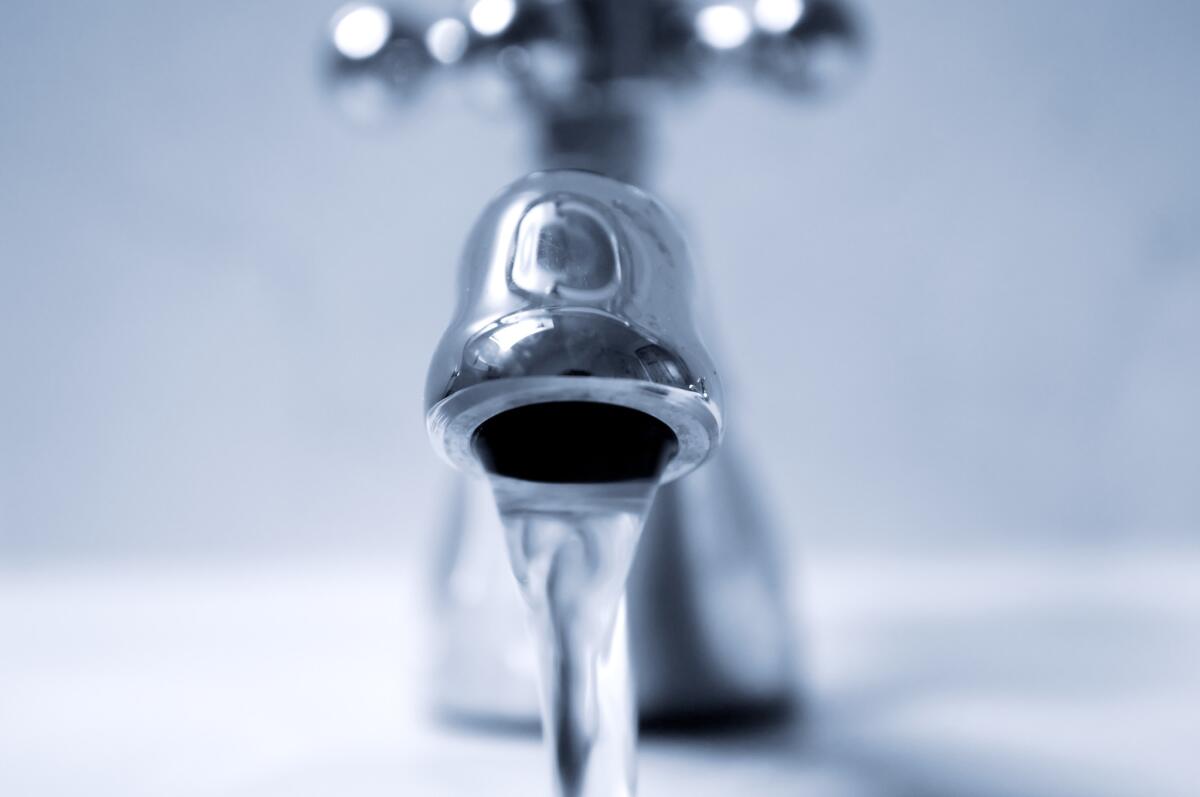43 easy ways to save water at home -- without losing the lawn

Don’t let the water run while you’re shaving.
Ripping up the lawn is the single best way to save water, but doing that can take weeks, if not months, of consideration and planning. And then there’s the cost.
Many of us are just not ready to take that step.
So what else can we do to help fulfill California Gov. Jerry Brown’s executive order mandating a 25% cut in urban water use?
We’ve compiled 43 wallet-friendly tips for reducing your water footprint. Some of these steps are obvious but bear repeating, like No. 25. And we know that some of these tips save water at the expense of using another energy source.
But water conservation expert Tracy Quinn of the Natural Resources Defense Council said that making just a few small changes to our daily habits can result in big water savings. “Every little bit helps.”
IN THE KITCHEN
1) Post reminder notes over all your sinks, beginning with the kitchen.
2) Don’t rinse scraps of food down the sink after dinner. Scrape them into your garbage pail.
3) It won’t kill you to do dishes in lukewarm water. Pretend you’re “glamping.”
4) While waiting for the dishwater to warm up, use the cooler stream to fill up your pet’s water bowl, or...
5) … fill the ice cube trays
6) ... fill reusable water bottles or a water pitcher that you keep in the fridge.
Readers share their water-saving tips:
7) But if you absolutely need hot water, consider heating up a teakettle at dish time and supplementing it with the cooler water right out of the faucet. (Rubber gloves are recommended.)
8) Got ice cubes left over in water glasses after a dinner party? Toss them onto the lawn.
9) Fix that leaky kitchen faucet and any other leaks around the house. That drip, drip, drip may not seem like a lot but could waste hundreds of gallons a year, Quinn says.
10) Not ready to spend big on a water-conserving dishwasher, washing machine or toilet? How about efficient new faucet aerators and shower heads? Many cities offer rebates.
11) Your dishwasher is at its most efficient when you’ve got a full load.
12) Some dishwasher models, however, offer a half-load option, which can be helpful if you live alone or rarely cook.
13) No dishwasher? Consider paper plates and cups if you’re hosting a huge bash. (Before you buy, find out which ones can go in your compost bin or your city’s recycling bin.)
IN THE LAUNDRY ROOM
14) Wait until you have a full load before washing clothes ...
15) … but if that is not an option, readjust the load-size control.
16) Stop and think about the age of your washing machine (and dishwasher). If they’re 10 years or older, they’re not as water efficient as they could be, says Ron Voglewede, global sustainability director for Whirlpool Appliances. The technology has changed dramatically. Newer machines “use significantly less water and less time, and less energy,” he said.
17) If your washing machine is old enough to drive, consider using a coin laundry. It just might save you money.
18) Use the Internet to check out appliance rebates offered by your water and energy suppliers.
IN THE BATHROOM
19) Place a cup and refillable water bottle in the bathroom for toothbrushing.
20) Don’t walk away while the shower is “warming up.” Be brave. Meanwhile ...
21) Position a sturdy plastic bucket or pitcher in your shower to collect the cooler water and then use it to fill a watering can for your potted plants, to clean the shower stall or to fill the toilet tank for flushing.
22) Aim for a three-minute shower. (Pretend you’re in the military.) Here’s the drill: Get wet. Shampoo. Condition. Scrub down. Rinse off. Bonus points if you turn the water off during your shampoo and scrub down.
23) Use a kitchen timer in the bathroom to track your shower time. The timer function on your smartphone works too.
24) If your bathroom sink takes forever to warm up, use a splash of heated teakettle water combined with tap water in a bowl to wash your face before bed.
25) Don’t let the water run while you’re shaving.
26) Use this simple test to make sure your toilet tank is not leaking into the bowl: Put a few drops of food-safe dye in the tank, Quinn says. Give it 15 minutes. If that color becomes visible in the bowl, you’ve got a leak.
27) Don’t flush the toilet bowl just to throw away stuff, like a tissue. That’s what the trash can is for.
BEYOND THE FRONT DOOR
28) Do you shower at the gym? Still keep it short.
29) Don’t wash your car in the driveway. Why? It can use up to 100 gallons of water, Quinn said. Worse: Runoff sends debris and toxins into the storm drains and, in turn, the ocean.
30) Or go a different route: Take “The Dirty Car Pledge” at LAWaterkeeper.org and vow not to wash your car for 60 days. You’ll get a blue sticker to put on your dirty car and can then share the image on social media using #DirtyCarPledge.
31) Stop servers before they just plop down glasses of H2O at your table, unless you intend to drink them.
32) Wash your dog at a self-serve pet wash or take Buster to a groomer.
IN THE YARD
33) Talk to a gardening expert about whether aerating your lawn — punching little holes through the compacted soil below — can help you cut down on the water it needs. (Do-it-yourself aerator sandals cost about $20.)
34) Make sure your sprinkler heads are water thrifty. (Some cities offer rebates on water-efficient replacement heads.)
35) Adjust sprinklers to hit only the lawn, not the sidewalk, the front porch and your neighbor’s front porch.
36) Skip one or two lawn waterings a week.
37) Scale back your sprinklers’ run time by two to three minutes.
38) Sweep sidewalks instead of using a hose to do the dirty work.
39) Shop around for rain barrels now, so you’re ready when the rain finally hits. Many cities offer discounts.
40) Make sure hoses have water-efficient spray nozzles, and get rubber washers to fix any leaks. Quinn says hoses without nozzles can waste eight gallons or more of water by the time you walk back to the spigot to turn them off.
41) If you know you want to tear up the lawn but just don’t have a design yet, consider letting it go brown until you make up your mind. (You might want to let your neighbors in on your plans.)
42) Price pool covers. The average pool can lose a jaw-dropping 20,000 gallons a year to evaporation.
43) Use mulch or composting around plants, reducing how much water they need.
If we missed your favorite ways to save water, please email us at [email protected] so we can add to this list online. You can also reach out to us on Twitter (@latimeshome) or Instagram using the hashtag #DroughtBuster. If we get enough new tips, we’ll feature them in an upcoming Saturday section. And look for more reader tips online at latimes.com/home.







